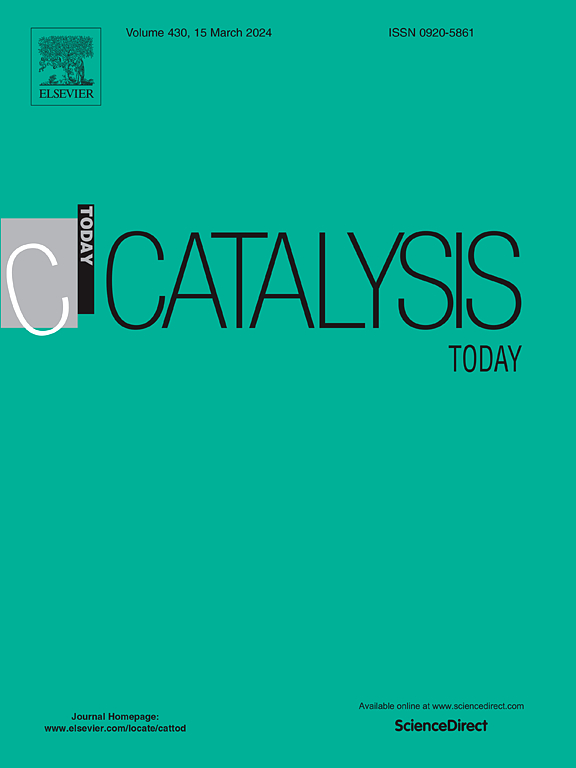Batch and continuous flow elimination of BPA with one-pot synthetized laccase@NH2-MIL-53(Al)
IF 5.2
2区 化学
Q1 CHEMISTRY, APPLIED
引用次数: 0
Abstract
Despite recent restrictions on its use, bisphenol A (BPA) continues to be present in wastewater, posing significant health risks that require effective removal methods. Several strategies have been proposed to address this issue, with batch reactors being the most widely used approach. However, scaling up removal systems to continuous flow conditions is essential for practical application in real-world wastewater treatment. This study presents a BPA removal system utilizing a packed bed reactor (PBR) with supported enzymatic catalyst. In previous research, we demonstrated that the laccase@NH2-MIL-53(Al) catalyst was highly effective in degrading BPA in a batch reactor, thanks to its high enzyme loading and minimal enzyme leaching. The system achieved over 80 % removal efficiency along five reaction cycles, operating faster than free enzyme systems. In this work, we extend the application of this catalyst to continuous flow conditions in a PBR, achieving superior removal efficiencies compared to batch processes. Under continuous flow, the biocatalyst maintained over 90 % BPA removal for extended periods, even at higher contaminant concentrations than typical in environment. The system exhibited remarkable stability with no diffusional limitations, suggesting high substrate accessibility to the enzyme. Additionally, chemical oxygen demand (COD) analyses of treated samples showed minimal increases, reinforcing the environmental compatibility and efficiency of the system. These findings highlight the potential of MOF-supported laccase for industrial applications in wastewater treatment, offering a scalable and sustainable solution for BPA degradation.
求助全文
约1分钟内获得全文
求助全文
来源期刊

Catalysis Today
化学-工程:化工
CiteScore
11.50
自引率
3.80%
发文量
573
审稿时长
2.9 months
期刊介绍:
Catalysis Today focuses on the rapid publication of original invited papers devoted to currently important topics in catalysis and related subjects. The journal only publishes special issues (Proposing a Catalysis Today Special Issue), each of which is supervised by Guest Editors who recruit individual papers and oversee the peer review process. Catalysis Today offers researchers in the field of catalysis in-depth overviews of topical issues.
Both fundamental and applied aspects of catalysis are covered. Subjects such as catalysis of immobilized organometallic and biocatalytic systems are welcome. Subjects related to catalysis such as experimental techniques, adsorption, process technology, synthesis, in situ characterization, computational, theoretical modeling, imaging and others are included if there is a clear relationship to catalysis.
 求助内容:
求助内容: 应助结果提醒方式:
应助结果提醒方式:


